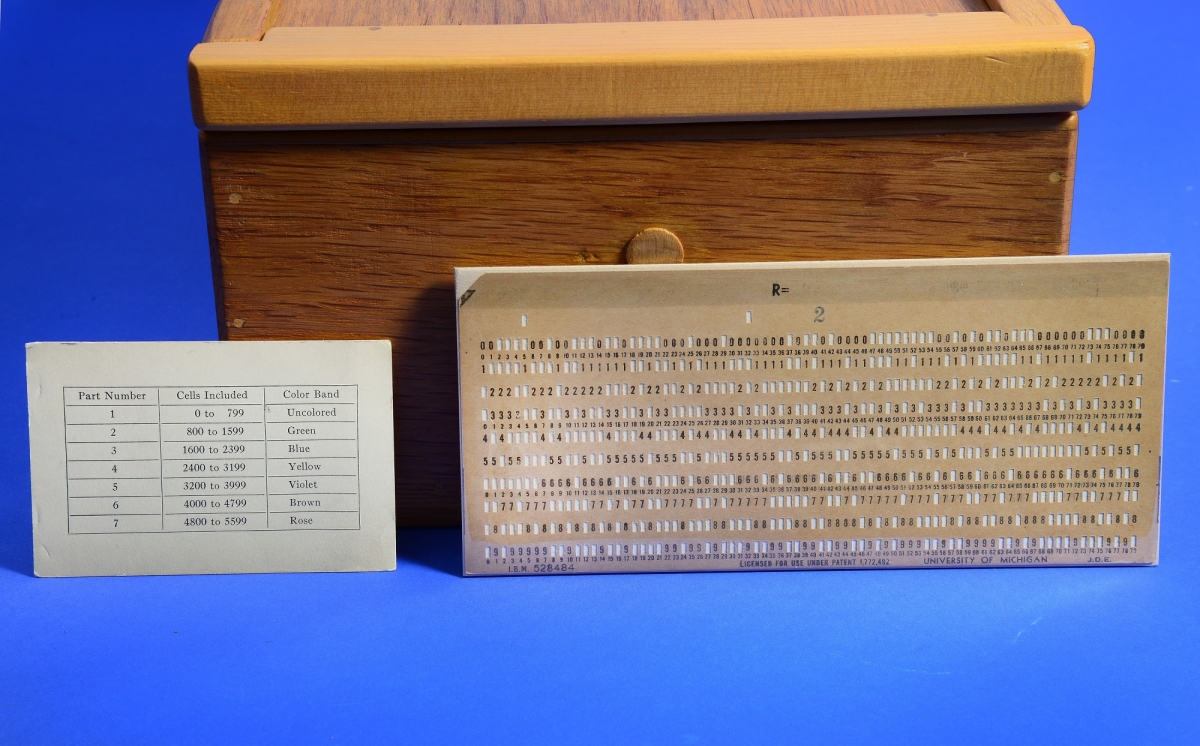- About MAA
- Membership
- MAA Publications
- Periodicals
- Blogs
- MAA Book Series
- MAA Press (an imprint of the AMS)
- MAA Notes
- MAA Reviews
- Mathematical Communication
- Information for Libraries
- Author Resources
- Advertise with MAA
- Meetings
- Competitions
- Programs
- Communities
- MAA Sections
- SIGMAA
- MAA Connect
- Students
- MAA Awards
- Awards Booklets
- Writing Awards
- Teaching Awards
- Service Awards
- Research Awards
- Lecture Awards
- Putnam Competition Individual and Team Winners
- D. E. Shaw Group AMC 8 Awards & Certificates
- Maryam Mirzakhani AMC 10 A Awards & Certificates
- Two Sigma AMC 10 B Awards & Certificates
- Jane Street AMC 12 A Awards & Certificates
- Akamai AMC 12 B Awards & Certificates
- High School Teachers
- News
You are here
Mathematical Treasure: Factor Stencil Punch Cards

IBM Punched Cards used as Factor Stencils, 1939, Smithsonian Institution negative number NMAH-AHB2017q016024
From the 1890s into the 1980s, rectangular paper punched cards were the most common way to enter data and programs onto processors like tabulating machines and then computers. In the late 1920s, number theorist Derek N. Lehmer of the University of California at Berkeley developed a set of punched paper sheets to assist in factoring large numbers. John D. Elder, an instructor at the University of Michigan, realized that factor stencils also could be put on punched cards, and he produced this set in 1939. The following year, Raphael M. Robinson of the University of California at Berkeley published a set of punched cards for finding quadratic congruences—these were in a form suited for distribution to libraries.
In general, some mathematicians embraced the electronic computer, writing programs for it that were entered on punched cards. Some such cards also survive in Smithsonian collections. For a listing of the punch cards in the mathematics and computer collections at the National Museum of American History, see the web object group https://www.si.edu/spotlight/punch-cards/punch-cards-data-processing.
Peggy Aldrich Kidwell (National Museum of American History, Smithsonian Institution), "Mathematical Treasure: Factor Stencil Punch Cards," Convergence (July 2021)




